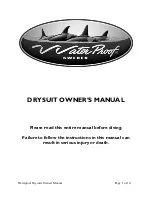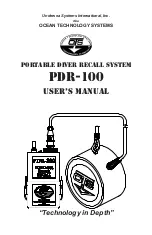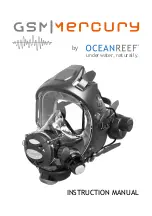
39
The problem is, on the other side of the membrane is an unknown test
solution, not potassium chloride. The outside electrode, also called
the Reference Junction, is of the same construction with a porous
plug in place of a glass barrier to allow the junction fluid to contact
the test solution without significant
migration of liquids through the plug
material. Figure 30 shows a typical
2 component pair. Migration does
occur, and this limits the lifetime
of a pH junction, from depletion
of solution inside the reference
junction or from contamination. The
junction may be damaged if dried
out because insoluble crystals may
form in a layer, obstructing contact
with test solutions. See pH/ORP,
pg. 38.
4. The Myron L Integral pH Sensor
The sensor in the
P
ool
P
ro
(see
Figure 31) is a single construction
in an easily replaceable package.
The sensor body holds an
oversize solution supply for
long life. The reference junction
“wick” is porous to provide a very
stable, low permeable interface,
and is located under the glass
pH sensing electrode. This
construction combines all the best
features of any pH sensor known.
5.
Sources of Error
The basics are presented in
pH/ORP, pg. 38.
a. Reference Junction
The most common sensor problem will be a clogged junction because
a sensor was allowed to dry out. The symptom is a drift in the “zero”
setting at 7 pH. This is why the
P
ool
P
ro
does not allow more than 1 pH
unit of offset during calibration. At that point the junction is unreliable.
b. Sensitivity Problems
Sensitivity is the receptiveness of the glass surface, which can be
diminished by a film on the surface. This problem also causes long
response time.
Glass surface
Figure 30
KCl solution
Electrode wire
Electrode
wire
H
+
ions
Junction
Plug
KCl solution
Figure 31
Junction plug
Platinum button
H
+
ions
Electrode wires
Glass
Glass
Surface
Содержание MLJ-PS6SI
Страница 1: ...16 November 10 Operation Manual POOLPRO ...
Страница 4: ...ii ...
Страница 54: ......
Страница 55: ......














































